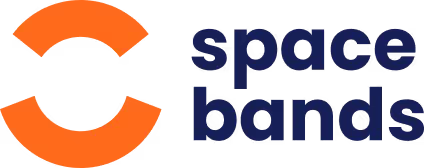
spacebands is a multi-sensor wearable that monitors external, environmental hazards, anticipates potential accidents, and gives real-time data on stress in hazardous environments.
Sign up to the mailing list:
Subscribe


Download your toolbox talk by clicking the button above and print it off to deliver to your team.
A toolbox talk is a short, informal meeting that covers a specific safety topic related to the work environment. Toolbox talks are an effective way to educate workers about the hazards and risks they face, and how to prevent or minimise them. Toolbox talks also provide an opportunity for workers to share their experiences, concerns, and suggestions with their peers and supervisors.
One of the topics that every worker should be familiar with is accident reporting. Accident reporting is the process of notifying the appropriate authorities and parties about any accidents, incidents, or near misses that occur at work. Accident reporting is not only a legal and contractual obligation, but also a vital part of improving safety and performance at work.
No matter how well trained a workforce is, sometimes accidents aren't reported; even more so with near misses. This can mean that there is vital information which could prevent accidents from occurring being missed. spacebands automates the accident and near miss reporting procedure.
Accidents and near misses are recorded on a wearable device and information is transferred to the analytics dashboard when the wearable is charged. Over time this analytical information can be used to identify trends - allowing you to introduce measures to reduce the risk.
spacebands devices alert users in real time to a variety of occupational hazards, giving you a two-pronged defence of pro-active protection and automated accident reporting.
In this blog, we will discuss why accident reporting is important, what are the benefits of reporting, and how to report accidents effectively. We will also provide some tips and best practices for reporting accidents, and some resources for further information.
Accident reporting is important for several reasons. First, it helps to learn from the causes and prevent recurrence. By reporting accidents, we can identify what went wrong, why it happened, and how to avoid it in the future. This way, we can reduce the likelihood of similar accidents happening again, and improve our safety performance.
Second, it helps to identify potential hazards and implement corrective actions. By reporting accidents, we can alert the management and the safety team about any unsafe conditions or practices that may exist at the work site. This way, we can take immediate steps to eliminate or control the hazards, and prevent further harm.
Third, it helps to comply with legal and contractual obligations. By reporting accidents, we can fulfil our duty to inform the relevant authorities and parties, such as the employer, the client, the insurance company, and the regulatory body. This way, we can avoid any legal or contractual penalties, and maintain our reputation and credibility.
Fourth, it helps to support the health and well-being of workers and others. By reporting accidents, we can ensure that the injured or affected workers receive the appropriate first aid or medical attention, and that their rights and benefits are protected. This way, we can promote the recovery and well-being of the workers, and show our care and concern for them.
To report accidents effectively, we should follow these steps:
Here are some tips and best practices for reporting accidents:
For further information or guidance on accident reporting, you can refer to these resources:
In this blog, we have discussed the importance, benefits, and steps of accident reporting at work. We have also provided some tips and best practices for reporting accidents effectively, and some resources for further information. Accident reporting is an essential part of improving safety and performance at work, and we should all participate in it responsibly and diligently.
We hope you have found this blog useful and informative. We encourage you to hold a toolbox talk on accident reporting and make sure your team know the importance of accident reporting. If you have any questions or there's a toolbox talk you'd like us to write, please feel free to contact us. Thank you for reading and stay safe.
spacebands regularly write toolbox talks on a variety of subjects in the field of health & safety. Bookmark the page or subscribe to our newsletter and get sent all the latest blogs, content and useful widgets and calculators designed for health & safety experts like you.
We think you'll also find the articles below really useful
Join 5,000 H&S professionals and sign up for the spacebands monthly newsletter and get the latest blogs, free resources, tools, widgets and a dose of health & safety humour.

spacebands is a multi-sensor wearable that monitors external, environmental hazards, anticipates potential accidents, and gives real-time data on stress in hazardous environments.
